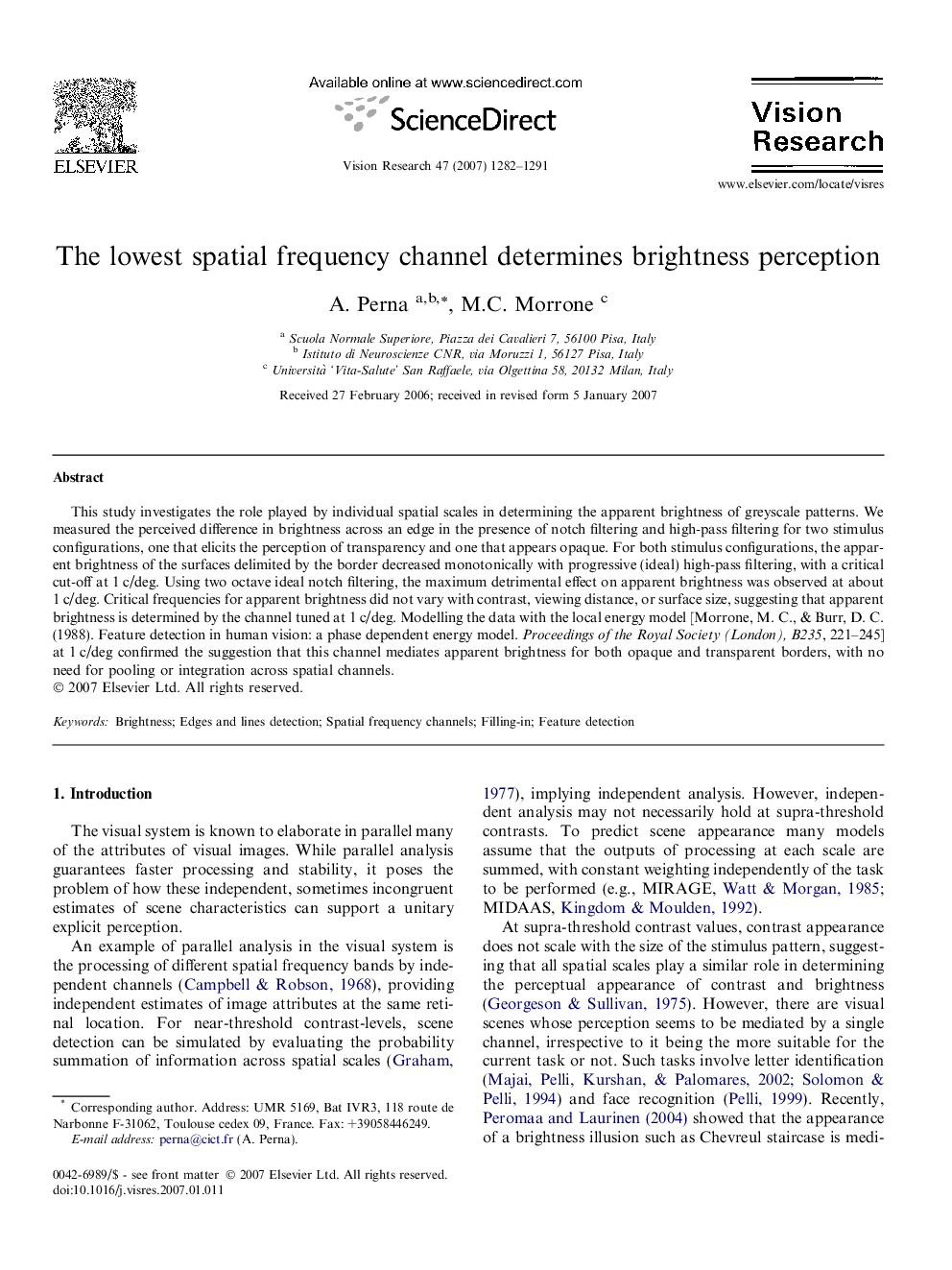| کد مقاله | کد نشریه | سال انتشار | مقاله انگلیسی | نسخه تمام متن |
|---|---|---|---|---|
| 4036320 | 1263593 | 2007 | 10 صفحه PDF | دانلود رایگان |

This study investigates the role played by individual spatial scales in determining the apparent brightness of greyscale patterns. We measured the perceived difference in brightness across an edge in the presence of notch filtering and high-pass filtering for two stimulus configurations, one that elicits the perception of transparency and one that appears opaque. For both stimulus configurations, the apparent brightness of the surfaces delimited by the border decreased monotonically with progressive (ideal) high-pass filtering, with a critical cut-off at 1 c/deg. Using two octave ideal notch filtering, the maximum detrimental effect on apparent brightness was observed at about 1 c/deg. Critical frequencies for apparent brightness did not vary with contrast, viewing distance, or surface size, suggesting that apparent brightness is determined by the channel tuned at 1 c/deg. Modelling the data with the local energy model [Morrone, M. C., & Burr, D. C. (1988). Feature detection in human vision: a phase dependent energy model. Proceedings of the Royal Society (London), B235, 221–245] at 1 c/deg confirmed the suggestion that this channel mediates apparent brightness for both opaque and transparent borders, with no need for pooling or integration across spatial channels.
Journal: Vision Research - Volume 47, Issue 10, May 2007, Pages 1282–1291